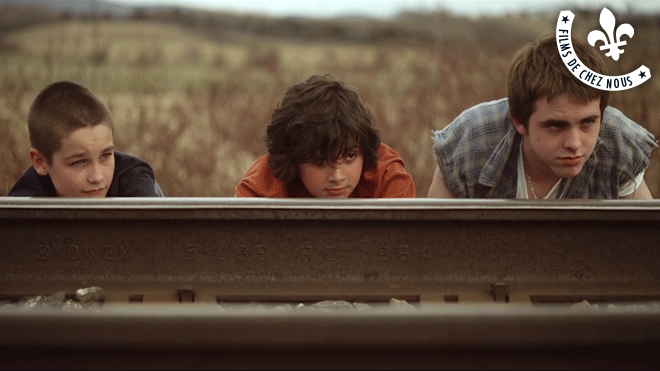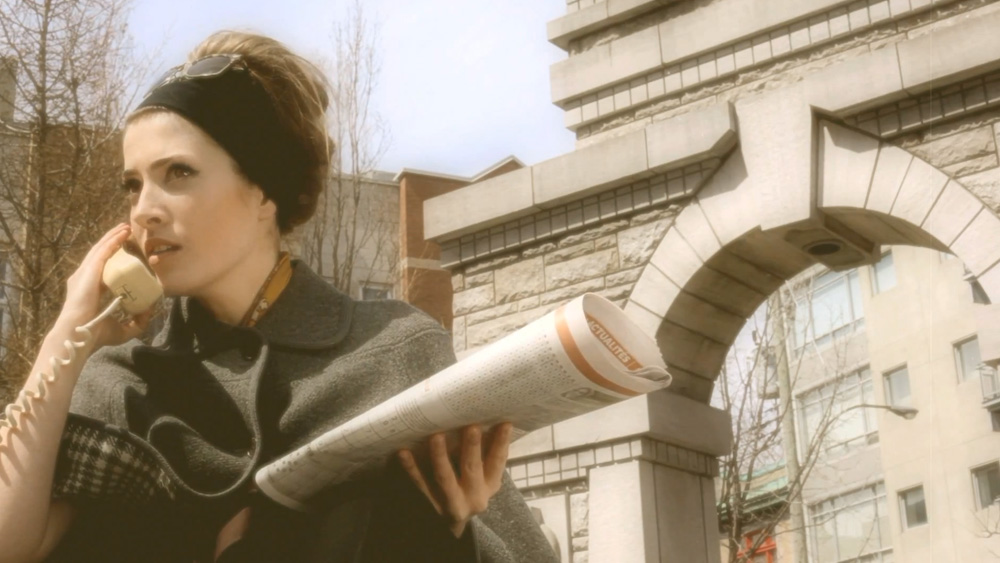A teenage girl must quickly adapt to a radically different urban environment.
A teenage girl from a rural village in northern Argentina moves to Buenos Aires to pursue a life with more opportunities and the hopes of helping her family back home. Sharing a small room in a large informal settlement with her older cousin’s family, she must quickly adapt to this radically different urban environment. Directed by Reed Purvis, an editor and filmmaker from Seattle who spent several years in Buenos Aires working on a documentary film focused on urban issues. ‘Barrio Frontera’ is a film based on personal experiences and real life situations and people, some of whom play themselves in the film. We spoke to Reed who told us a little more on the project.

Can you tell me a little bit about ‘Barrio Frontera’, how did this film come about?
I’d been working on a longer script and really wanted to experiment with making a short film from part of that script. So I adapted a small part of the story into its own short film. I also had lived in the neighborhood where the film is set and the story of the film is inspired by a young girl who moved to the neighborhood from a rural village and I was fascinated by what that type of transition would be like. The story is also based on events and daily life from that neighborhood. I realized during pre-production that without having local friends and knowing the neighborhood intimately it would have been impossible to shoot this film.
How did you go about casting for Marisel and Miri?
We conducted a local casting in the Villa 31 neighborhood for various characters as well as a separate casting in the city specifically for Marisel’s character. We quickly realized with such a short window for casting and rehearsals we would need someone with acting experience for Marisel’s character. None of the actresses fit the part and luckily the assistant director knew a young actress who had played a similar role in a feature film, María y el Araña, and she fit the part really well. In the end, we ended up finding many of the supporting roles from the casting session. For the part of Miri, we had an informal casting session with my friend Monica, who grew up in the Villa 31 neighborhood, and she kind of surprised us. She was very natural in front of the camera despite having never acted previously.

As a writer/director how did you go about unscripted scenarios in that unpredictable environment?
There actually weren’t any unscripted scenes or scenarios in the film except for some of the smaller details. The script was continually evolving during pre-production and production and the short came out very close to the final script. A few examples of unscripted details that we shot were the people passing in front of the camera or atmospheric things like the plane flying overhead. Some of the shots of the ball being kicked around at street level were documentary shots that weren’t scripted.
What was the most challenging scene for you to film?
I would say the scene with the wounded guy bleeding in the cart was probably the most difficult. We did roughly 10-13 takes and were shooting until 2-3am. It was mostly technical difficulties with small issues happening with either the boom or the camera movement and the timing of the various elements. The dialogue between Miri and Marisel after the cart passes by also didn’t quite work out how I had hoped and it became the most difficult scene to edit as well.

Has this film taught you anything about filmmaking?
Yes, this film was kind of a personal experiment working with non-actors and creating fictional scenes in a neighborhood that can be a difficult place to film. Most of the participants had the script beforehand and we had roughly a week of rehearsals. For this style of film, I learned that I would prefer not to show the script to any of the non-actors and would instead work with them to create the scene more in their own words, experimenting more with the dialogue and the topic of conversation. The scenes are based on daily life but I think by changing the style of how the scenes are built, it could not only be more fun and more collaborative but also more lively and have more character overall.
There was one scene where I did choose this style of scene building – where the younger neighbor is sitting chatting with an older female neighbor about Paraguay – and I think it’s arguably the most naturalistic scene and carries more personality. The reason that scene was different is because she just talks and talks so it was better just to have the other character prompt her with questions like an interview. This scene also happened to be the most enjoyable to shoot and wasn’t stressful so I feel like that was an important lesson.
What do you hope people will take away from Barrio Frontera?
I hope they get a feel for the neighborhood perhaps more than anything. What it’s like to hang out there, the feeling of community, the concept of streets used for recreation and as social gathering spaces – something that has largely disappeared from cities over time. There has been quite a bit of discrimination towards this neighborhood and others like it, although that has eased up a little in recent years. This is largely driven by ignorance, so experiencing the neighborhood from the perspective of someone who has moved there to improve their life, for better opportunities, hopefully shows a different perspective that can allow for more empathy.
As well, the concept of poverty can perhaps be somewhat subjective and even superficial in terms of being thought of as a state of being that is unchanging. I think playing with the concept of poverty or the concept of marginalization can be interesting, as we learn that compared with Marisel’s home village, this neighborhood is full of resources and jobs and is a land of opportunity for her despite people’s interpretations of the neighborhood based on appearance. I’m not sure if people will get that from the film necessarily but it is something that I hoped would stand out a bit more.

What are your favorite films?
There’s way too many but I can name a few. I especially like Italian cinema, neo-realist films like Rossellini’s trilogy – Rome Open City, Paisan, and Germany Year Zero, also Rocco and His Brothers, Once Upon a Time in the West, 8 1/2, Francesco Rosi’s Hands Over the City and more contemporary films like Gomorra and The Great Beauty. Also, Le Haine, 400 Blows, Les Misérables (2019), Rosetta, Do the Right Thing, Amores Perros, The Thin Red Line, the list just goes on.
What are your favorite short films?
For short films there’s many I like, mostly from festivals and Vimeo. Some standouts include Da Yie, Sandstorm, Deerwoods Deathtrap (Watch on FS), Mixtape Marauders, Siete en Punto, Reina, Thunder Road (Watch on FS), Dodgy Dave, Olote, and A Ciambra. I also especially like Paul Thomas Anderson’s first short, Cigarettes & Coffee, Ruben Östlund’s Incident by a Bank and Fellini’s short in Bocaccio 70, The Temptation of Doctor Antonio.
What’s coming up next for Reed Purvis?
I’m working on finishing writing a feature film that’s also set in Argentina. It deals with deforestation and the eviction of small scale farmers by large scale agricultural producers and how these broken communities reform into new communities in the city. I’m also working on developing several shorts, including one set in a Turkish Cafe where I live in Washington state.




